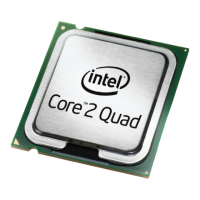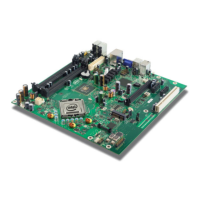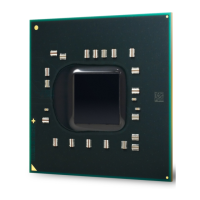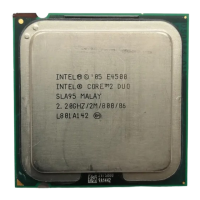
Do you have a question about the Intel QX9770 - Core 2 Extreme Quad-Core Processor and is the answer not in the manual?
| Processor Number | QX9770 |
|---|---|
| Number of Cores | 4 |
| Thread Count | 4 |
| Clock Speed | 3.2 GHz |
| L2 Cache | 12 MB |
| Bus Speed | 1600 MHz |
| Thermal Design Power (TDP) | 136 W |
| Socket | LGA 775 |
| Manufacturing Process | 45 nm |
| Max Operating Temperature | 64.5°C |
| Virtualization Technology | Yes |
| 64-bit Support | Yes |
| Instruction Set | SSE4.1 |
| Memory Channels | 2 |
| Memory Types | DDR3 |
Details the physical and mechanical specifications for the processor.
Outlines the thermal specifications like Thermal Profile and TCONTROL.
Factors to consider for heatsink design, including surface area and conduction.
Defines thermal characterization parameters like Psi (Ψ) for performance assessment.
Recommends using a Thermal Test Vehicle (TTV) for performance assessment.
Provides guidelines for measuring local ambient temperature accurately.
Details procedures for accurate measurement of processor case temperature.
Details the components and functionality of the on-die thermal monitor.
Explains the PROCHOT# signal for indicating thermal excursions.
Describes the TCC's role in reducing power to manage temperature.
Details the enhanced Thermal Monitor 2 capabilities for power reduction.
How the Thermal Monitor is enabled and configured via BIOS.
Explains the THERMTRIP# signal for catastrophic cooling failure.
Discusses the DTS for fan speed control and its relation to TCONTROL.
Outlines safety certifications and requirements for components.
Explains the QST algorithm using PID control and a weighting matrix.
Details factors affecting TIM performance: thermal resistance and wetting.
Step-by-step guide for attaching a thermocouple using solder.
Step-by-step process for attaching the thermocouple to the IHS.
Describes the soldering process to attach the thermocouple bead.
Explains how thermal profile and TCONTROL dictate fan speed.












